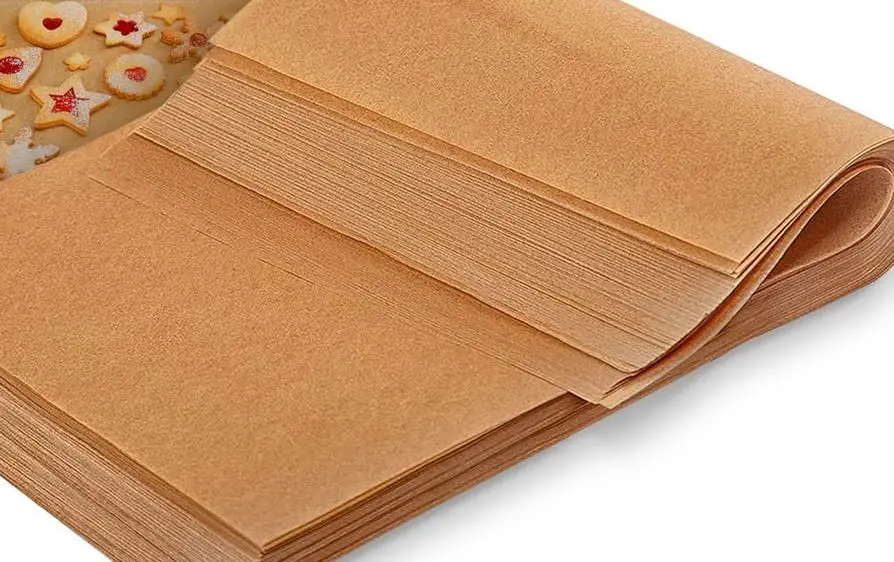Sublimation involves a lot of heat so having a smooth nonstick surface to print on is critical.
Two common options are teflon sheets or parchment paper. But which one should you choose? If you’ve ever pondered this decision while prepping for a sublimation project, you’re not alone.
Both of these have pros and cons that make them better suited for particular situations.
To ensure you end up with quality results on all your printed goods, it’s important to understand the key differences between the two options.
In this post, I’ll compare teflon sheet vs parchment paper in detail.
Parchment Paper Vs Teflon Sheet
The main difference between teflon sheets and parchment paper comes down to durability. Teflon is extremely durable and long-lasting.
A single teflon sheet can be used for thousands of presses!
Also Read: Butcher Paper Vs Parchment Paper
However, Teflon sheets are not recommended for dye sublimation.
Parchment paper, on the other hand, is designed to be disposable. Each sheet can only be used a couple of times but it is cheap.
Here’s a quick summary of the differences between the two:
| Feature | Teflon Sheets | Parchment Paper |
| Cost | Expensive | Very affordable |
| Durability | Extremely durable. | Must be replaced frequently |
| Heat Tolerance | Withstands up to 500°F | May burn above 425°F |
| Surface | Provides smooth, nonstick surface | Provides smooth surface for transfers |
| Heat Distribution | Promotes even heating | Can lead to uneven heating |
| Ease of Use | Limited size options available | Can be cut to any size needed |
| Best For | High-volume sublimation | Occasional use, and for dye transfers. |
Let’s take a look at some of these in more detail:
Heat Resistance
Teflon sheets are specially engineered to withstand incredibly high temperatures, up to 500°F in some cases. This makes them ideal for sublimation which requires larger heat transfers.
Teflon’s heat resistance ensures it won’t warp, melt, or degrade even when exposed to the extreme heat needed for most sublimation processes.
You never have to worry about the teflon sheet itself breaking down.
While parchment paper is also designed to be heat resistant, especially for baking purposes, it still has its limits.
Also Read: Heat Press Turned White Shirt Yellow
Most parchment paper can only withstand temperatures up to 425°F before it starts becoming brittle, scorched, or discolored. Going beyond that can damage the parchment paper quickly and impact the quality of the transfer.
The lower heat tolerance makes parchment less reliable for substrates requiring very high sublimation temperatures.
Non-Stick Properties
Teflon is prized for its natural non-stick properties. Sublimated images never adhere to the teflon surface, ensuring clean release once pressing is complete.
This prevents distortion, smearing, or any residue left behind on the sheets.
Teflon’s non-stick properties also remain intact even after repeated pressing.
Parchment paper has some non-stick properties, but prolonged high heat exposure during sublimation transfers can degrade the silicone coating that provides the non-stick surface.

Over time, sublimation prints may start to stick to the parchment paper, making it hard to remove without smudging or tearing the image.
Availability And Cost
Teflon sheets designed specifically for sublimation pressing are readily available from many online retailers.
They come in set sizes like 8.5″ x 11″ up to larger options like 16″ x 20″.
The specialized sheets cost more upfront, usually $20-$60 based on dimensions. But their long lifespan makes them a valuable investment.
Also Read: Can You Buy A DTG Printer Under $500?
Parchment paper on the other hand is a common kitchen supply and can be found affordably at any grocery store or retailer with a kitchen section.
A 50 foot roll may cost as little as $5-10.
The downside is that the parchment paper needs to be replaced frequently when used for sublimation, reducing potential cost savings over time.
Durability
Teflon is an extremely durable synthesized material designed for high performance in industrial applications. A single teflon sheet can be used over and over, often lasting for several years even with repeated pressing.
Parchment Paper is a paper product and has natural limits to its durability and lifespan.
While the silicone coating helps protect it, the high heats of sublimation will gradually degrade the parchment paper over continuous use.
Parchment becomes more prone to ripping, staining, and sticking when used for sublimation.
Is Teflon Or Parchment Paper Better For Heat Press?
Overall, Teflon sheets are generally better than parchment paper for heat press. However, Teflon is bad for dye sublimation.
Teflon sheets are non-stick and provide a smooth and even surface for heat distribution.
Plus, they are more durable and can be reused multiple times.
FAQs
Can You Use Parchment Paper To Iron On Vinyl Instead Of Teflon?
Yes, you can use parchment paper as an alternative to Teflon sheets when ironing on vinyl.
Parchment paper will protect the vinyl from direct contact with the iron, preventing any potential melting or distortion. It also prevents the vinyl from sticking to the iron’s surface.

